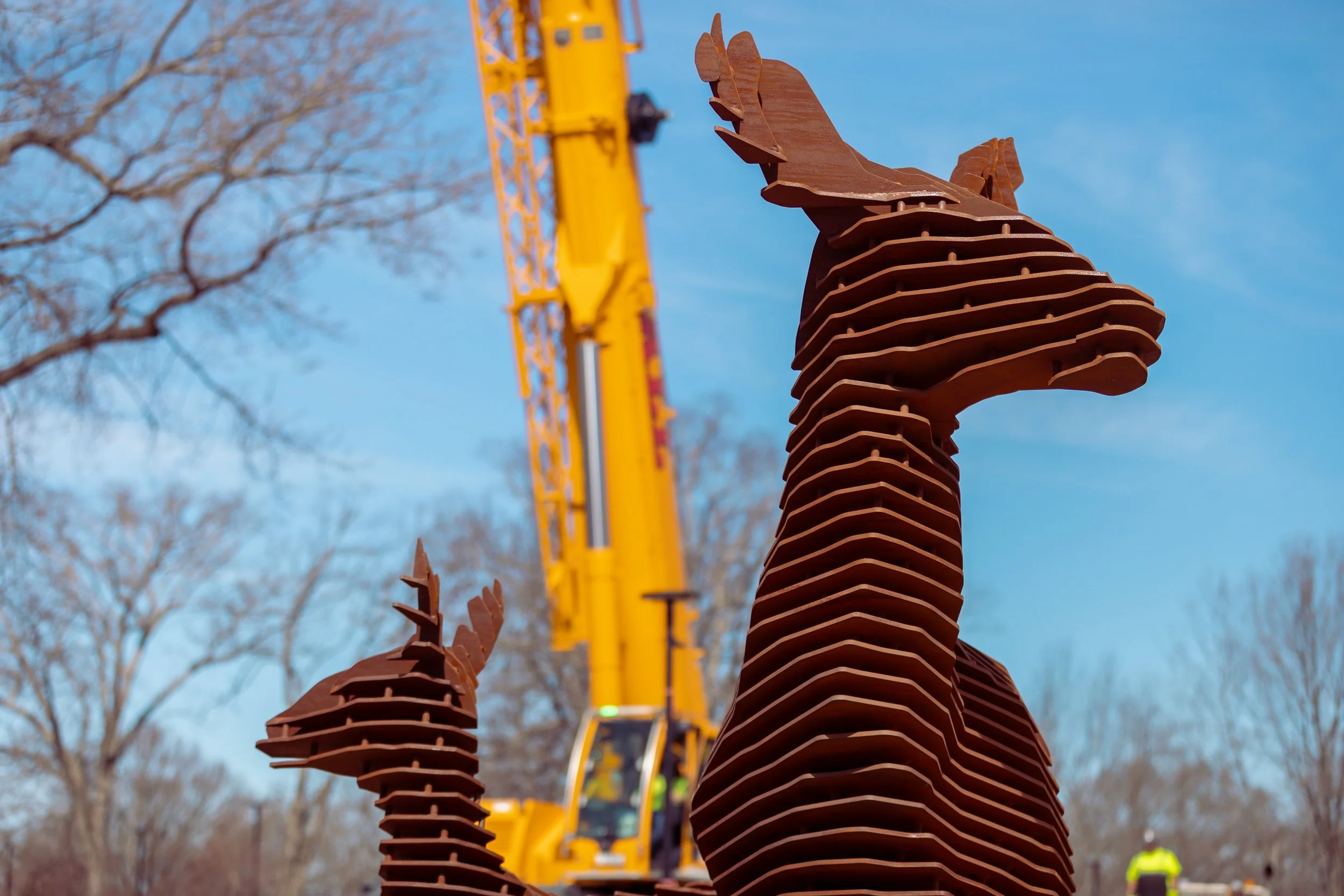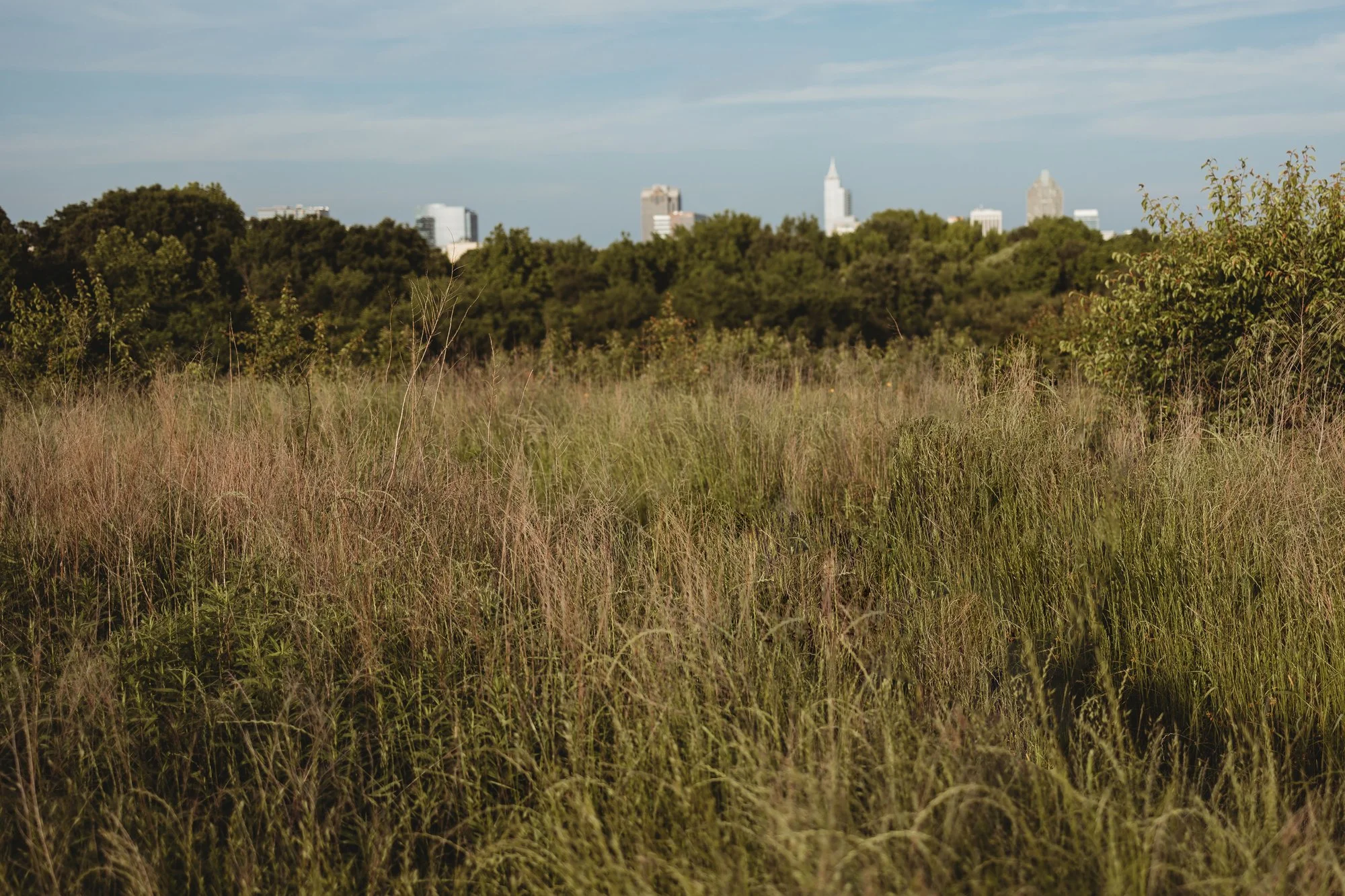
Mark Reigelman II, Meadow of the Deer
March 2025
A family of three deer quietly inhabits the hillside at Dix Park’s Gipson Play Plaza, inviting reflection, remembrance, and connection.
Commissioned by the City of Raleigh and part of the municipal art collection, Meadow of the Deer by artist Mark Reigelman uses scale, symbolism, and stillness to honor the land’s layered past and evolving purpose.
The work draws on both the natural beauty of the site and the history of care that defines it. The title nods to the meaning of Raleigh’s name, believed to come from the Old English for “meadow of the deer.” Through thoughtful placement and form, Reigelman offers visitors a quiet space to pause and feel part of something larger.
Project Partners
Artist Statement
Walking through the grounds of the original Dix Hill Asylum, I couldn’t help but reflect on my own experiences with the realities of mental health. My family has long faced the challenges that come with it—treatment-resistant depression, debilitating anxiety, and schizophrenia have all left their marks. Yet, we have also witnessed resilience—through counseling, therapy, modern medicine, treatments, and community, we are finding ways to lead fulfilling lives.
Recently, my mother emerged from years of devastating depression – a journey she never chose, but one that required a Wizard of Oz-size cast to help her through. She had always been the bright yellow thread weaving each family member into a tightly knit tapestry, but as her illness took hold, that thread began to fray. Her enveloping hugs turned metallic, hollow, and unoiled. Her animated laughter, once infectious, went from Technicolor to monochrome. And the glittery heel-taping joy that defined her rolled up and coiled into the shadows. Her absence was felt in every corner of our lives, casting a heavy, unshakeable cloud over our family.
Since her recovery, my mother has described her depression as a black fog where reality and anxiety-driven illusions blurred together. It was a world where the contours of her surroundings shifted unpredictably, always just out of focus.
This description profoundly influenced my approach to Meadow of the Deer. I wanted the sculpture to embody that sense of disorientation and transformation, forms that waver between absence and presence. As visitors move around the installation, the deer silhouettes will seem to vanish into the landscape, only to reappear unexpectedly, like fleeting clarity in a troubled mind.
Materially, I sought a medium that could reflect both struggle and resilience. Corten steel, with its evolving patina, reveals time’s passage—its stains and drips acting as echoes of past wounds, its self-healing properties symbolizing recovery and adaptation. Just as the patients of Dix Hill found solace in nature, this work acknowledges both the weight of mental illness and the quiet strength it takes to journey down the meandering brick road back home.
About Mark Reigelman
Mark Reigelman is an American artist based in Brooklyn, New York. Reigelman was born in Cleveland, Ohio. He pursued his studies in Sculpture and Industrial Design at the Cleveland Institute of Art and furthered his education in product design at Central Saint Martins, University of the Arts in London. He is recognized for his large-scale public art, including Manifest Destiny at the Hotel des Arts in San Francisco, California, and Smökers, a series of miniature houses positioned over steam-emitting manholes in New York City.
-
Reigelman's work reevaluates the everyday, reinvigorates gathering spaces, and engages with urban and rural conditions. These interventions attempt to reorient one’s perception and inspire a renewed collective consciousness. By favoring the process of research and exploration, he has a unique body of work poised between abstraction and literal representation, guided by a clear conceptual foundation and whimsical synthesis. It is this bold, site-specific approach to reimagining spaces that he hopes to apply to each artwork he creates.
His artistic ethos is rooted in the notion that public art can act as a portal to other possible worlds, which viewers might traverse and inhabit. The intent is to visually communicate a narrative that reshapes aspects of a specific environment and engages individuals in new and exciting ways, urging viewers to interact with the site and one another. This framework guides the physical characteristics of the installation; placement, duration, scale, colors, processes, and materials are selected based on their ability to convey best and reinforce the conceptual narrative. To achieve this level of energy and site responsiveness, he begins with meticulous research and documentation of the local environment and site history.













